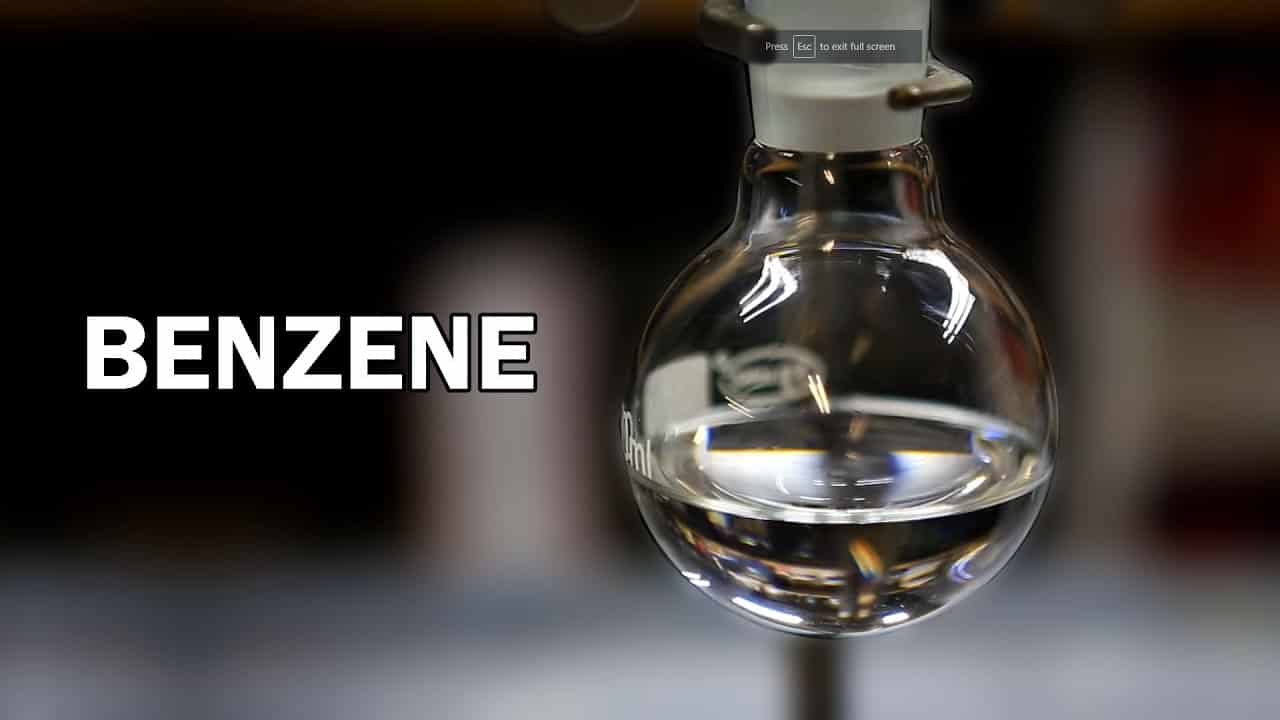Welcome To ChemAnalyst

Benzene is primarily produced through catalytic reforming, steam cracking, and toluene hydrodealkylation processes in petrochemical refineries. Catalytic reforming involves converting low-octane hydrocarbons into aromatic compounds using platinum-based catalysts. In steam cracking, benzene is recovered as a by-product of ethylene production, while hydrodealkylation converts toluene into benzene under high temperature and pressure conditions.
I. Introduction
Benzene is a foundational aromatic hydrocarbon extensively used as a feedstock in the production of various chemicals, including styrene, cumene, and cyclohexane. It is vital to numerous industries such as petrochemicals, plastics, and resins. Understanding benzene production is essential for optimizing refinery output, enhancing supply chain reliability, and aligning with sustainability and regulatory mandates.
The process directly influences cost efficiency, energy intensity, and environmental impact—key metrics for producers striving for performance and sustainability
II. Overview of the Production Process
Benzene is primarily produced as a co-product during petroleum refining and steam cracking operations. Three key processes dominate global benzene production:
• Catalytic Reforming (from naphtha)
• Steam Cracking (of hydrocarbons like ethane, propane, and naphtha)
• Toluene Conversion (through disproportionation or hydrodealkylation)
Each process leverages specific feedstocks and operating conditions to extract benzene from complex hydrocarbon mixtures. Benzene is separated via distillation, extraction, or crystallization after production, achieving purities above 99.9% for industrial applications. Typical yields vary by method and feedstock type but range between 60–90% efficiency, depending on integration with other refinery outputs
III. Raw Materials and Input Requirements
The key feedstocks for benzene production include:
• Naphtha – Used in both catalytic reforming and steam cracking.
• Toluene – Utilized in hydrodealkylation (HDA) and disproportionation processes.
• Hydrogen – Required in hydrodealkylation reactions to facilitate dealkylation.
• Utilities – Steam, electricity, and water are essential for cracking, distillation, and heat recovery.
Feedstock quality is critical: impurities like sulfur, oxygenates, and metals can deactivate catalysts and reduce product purity. Accurate control of pressure, temperature, and feed ratios is also essential to ensure reaction efficiency and selectivity toward benzene.
IV. Major Production Routes
• Catalytic Reforming (CR)
• Involves dehydrogenation and aromatization of naphtha using platinum-based catalysts.
• Common in integrated refineries; yields benzene, toluene, and xylene (BTX).
• Steam Cracking
• Produces benzene as a by-product while targeting ethylene and propylene production.
• Utilized in olefin plants, especially in North America and the Middle East.
• Toluene Hydrodealkylation (HDA)
• Converts toluene to benzene using hydrogen and a metal-based catalyst at high temperatures (500–650°C).
• Preferred when excess toluene is available or when benzene demand spikes.
• Toluene Disproportionation (TDP)
• Reacts toluene to produce benzene and xylenes; used in Asia and Europe for BTX optimization.
• Sustainable Pathways
• Research is underway on bio-derived toluene and pyrolysis of plastic waste as feedstocks for circular benzene production
V. Equipment and Technology Used
• Reformers and Crackers – Fixed-bed catalytic reformers and steam crackers are central to benzene production.
• High-Pressure Reactors – Used in HDA processes with alloy linings to handle high temperatures and hydrogen pressures.
• Distillation Columns – Employed for benzene separation and purification; azeotropic and extractive distillation may be used for high purity.
• Solvent Extraction Units – Sulfolane or other selective solvents remove benzene from reformate or pyrolysis gasoline (pygas).
• Online Analyzers and DCS Systems – Enable real-time process monitoring and optimization for better yields and emissions control.
VI. Environmental and Safety Considerations
• Emissions and Effluents
• Benzene is classified as a carcinogen; vapors are hazardous to human health. VOC control, leak detection, and flaring systems are mandatory.
• Steam crackers and reformers emit CO2 and NO?; energy efficiency and emission reduction strategies are critical.
• Effluent Treatment
• Wastewater from solvent extraction units may contain aromatics and must undergo chemical and biological treatment.
• Solid Waste
• Catalyst handling requires strict safety; spent catalysts are recovered or safely disposed of.
• Worker and Community Safety
• Enclosures, ventilation, benzene monitoring, and PPE use are regulated under OSHA, REACH, and local frameworks.
VII. Conclusion and Future Innovations
• Biomass and Waste Feedstocks
• Efforts are underway to derive benzene from lignin and mixed plastic pyrolysis oils for circularity.
• Catalyst Advancements
• Nanostructured and zeolite-based catalysts are being developed for higher selectivity and lower energy use.
• Carbon Capture Integration
• New benzene plants are evaluating CO2 recovery units to meet climate goals.
• Digital Twin and AI Integration
• Predictive modeling and process automation enhance safety, efficiency, and environmental compliance.
• The benzene industry is evolving toward decarbonization, circularity, and innovation-led efficiency, positioning it for resilience amid tightening environmental norms and shifting feedstock economics.
We use cookies to deliver the best possible experience on our website. To learn more, visit our Privacy Policy. By continuing to use this site or by closing this box, you consent to our use of cookies. More info.
